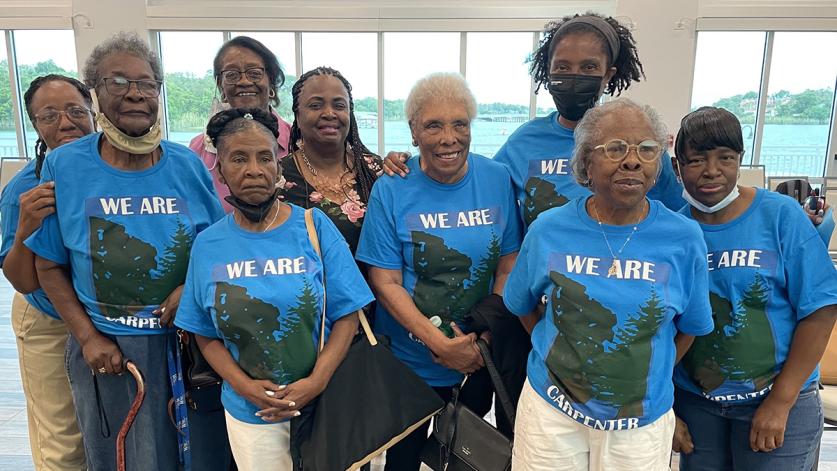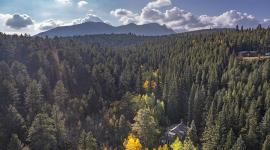A Promising Future at Carpenter Creek?
Plans to restore Jennie Hudgins’ Swimming Hole at Carpenter Creek in Pensacola, FL, featured in The Cultural Landscape Foundation's (TCLF) Landslide 2021: Race and Space report and digital exhibition, received a boost of public support and attention in early May 2022, a sharp contrast to the ongoing environmental challenges threatening the city’s iconic Carpenter Creek waterway.
Community residents and advocates joined city and county elected officials on Monday, May 2 at Pensacola’s Bayview Center for an Open House and presentation by the Carpenter Creek/Bayou Texar Water Management Plan Team.

The consulting team – WOOD Engineering PLC and SCAPE Landscape Architecture – shared the culmination of their two-year study and recommendations for fifteen site-specific projects envisioned to improve the environmental conditions of the watershed and restore areas of the creek to public access.
Among the projects was a proposed Blueway along with a historic marker and interpretive signage in the section of the creek that includes Jennie’s Swimming Hole.
The public meeting followed a months-long process of soliciting input from the community via the RestoreTheWatershed.com online platform. With public engagement limited during the novel corona virus pandemic, the workshop marked the first time that the community could gather in-person to review and provide feedback on the planning process. The consultant team invited workshop attendees to “cast their votes” for their three favorite sites as a way to gauge public sentiment and feedback on the plans.
Members of the New Hope Missionary Baptist Church attended the workshop accompanied by Jennie Hudgins’ descendants – Ora Wills and Angela Kyle. New Hope members who recently celebrated the church’s centennial anniversary in March stood out among the crowd with their blue “We Are Carpenter” t-shirts, and proudly cast their votes in support of prioritizing Jennie’s Swimming Hole in the future efforts to restore the Creek.

In advance of the meeting, TCLF and the Trust for Public Land each submitted letters of support to the Water Management Plan Team endorsing the swimming hole site.
By the end of the evening, the swimming hole site stood out among the others as a clear popular favorite, however, Hudgins’ great-great granddaughter, Angela Kyle voiced her opinion that the team should consider more creative options for commemorating the location: “Given the creek’s role in the spiritual and religious life of Black Pensacola and as this project moves forward to conceptual design stage, as a community we should challenge ourselves to find unique and creative ways to interpret this history.”
Despite the positive step forward on the planning front, the creek’s current reality is the source of considerable tension among Pensacola’s elected officials as local efforts have failed to mitigate the environmental impacts of two Florida Department of Transportation projects. Current engineering work is dramatically threatening the creek’s fragile ecosystem even while the planning process is underway.

Less than one mile upstream of the swimming hole location, state transportation workers have dumped mountains of red clay along the creek bank to prevent the collapse of a parking lot along the busy Davis Highway corridor.
A May 18 Pensacola News Journal article documented the rising tide of frustration between city hall and city council.
At present, this situation remains unresolved with a current proposal from the mayor’s office to engage WOOD Engineering for a new study and a proposed intervention plan to stem the current erosion and prevent further environmental damage.





